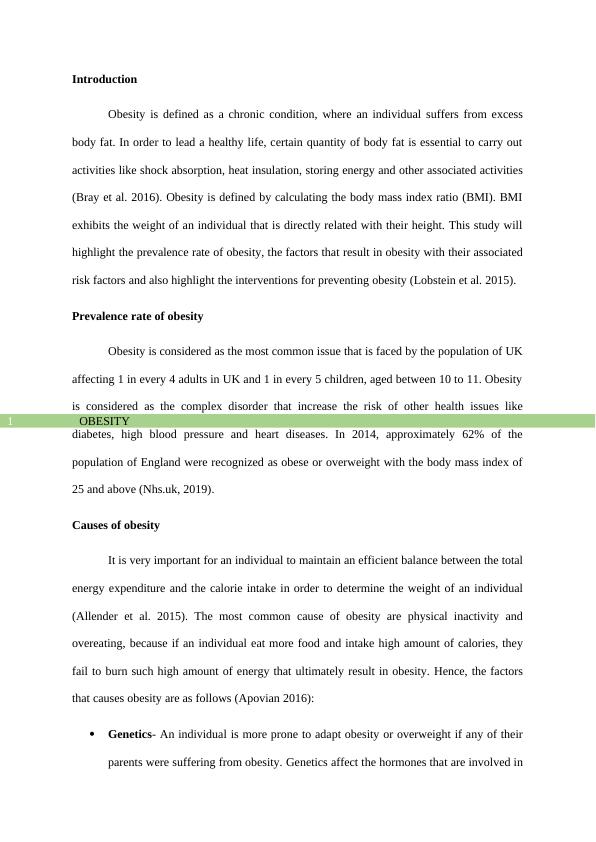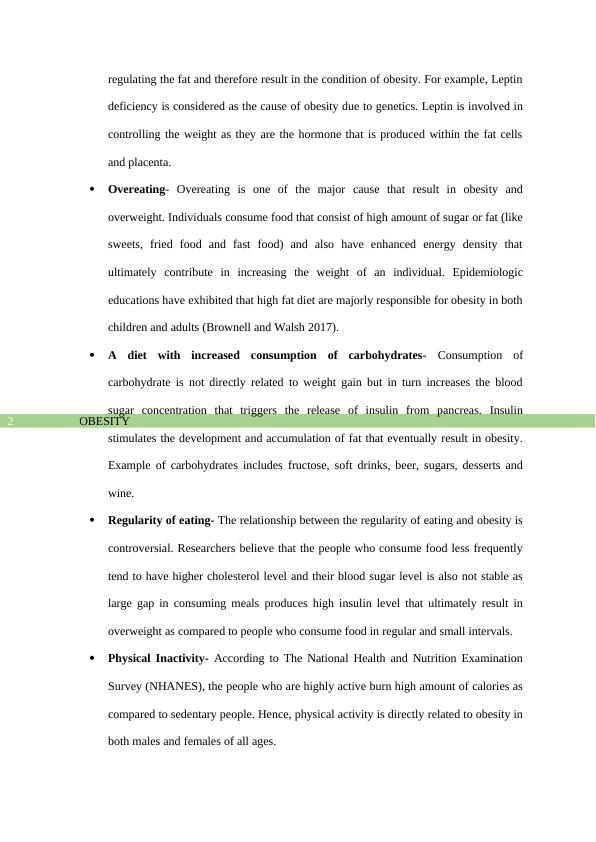Obesity: Prevalence, Causes, Risk Factors and Interventions
7 Pages1827 Words314 Views
Added on 2022-11-16
About This Document
This study highlights the prevalence rate of obesity, the factors that result in obesity with their associated risk factors and also highlight the interventions for preventing obesity.
Obesity: Prevalence, Causes, Risk Factors and Interventions
Added on 2022-11-16
ShareRelated Documents
End of preview
Want to access all the pages? Upload your documents or become a member.
Causes, Effects and Solutions of Obesity - Desklib
|4
|749
|170
Main Causes of Obesity (Doc)
|6
|1649
|164
QCF252Effects of Obesity (Biology Life Science) TP2, 2017
|5
|1008
|106
Identify The Main Causes of Obesity Essay
|8
|1822
|212
Literature Review on Obesity: Causes, Symptoms, Related Diseases, and Interventions
|7
|1448
|96
Factors and Strategies for Treating Adult Obesity in England
|41
|14630
|291



